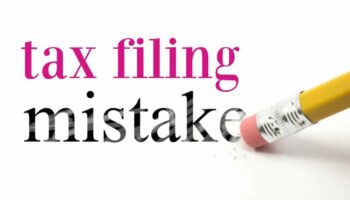You have to keep one eye on the future—on what your customers need, what you can deliver, and how you will achieve your end goal—and one eye on the present, including new strategies, current financials and tax planning. All this and you want to be profitable too.
BDO’s Rachel Gervais has over 15 years of experience working with clients year-round to help minimize taxes and maximize profits. Here she outlines the most common tax traps for entrepreneurs and how to avoid them, so that you can keep more of your hard earned money in your pockets.
Trap # 1: “Owning” too much of your business
Structure your business ownership so that you are not the only one paying tax on earnings and growth.
Solution: Consider an estate freeze. This allows you to lock in the value of your company and lets others participate in future growth and, if desired, control.
Trap # 2: Paying too much tax in growth phase and exit phase
If you alone are paying taxes on what you draw from your company, it’s likely too much tax.
Solution: Income splitting. Consider reasonable salaries to other family members and also consider family trusts to achieve income splitting. Income splitting reduces the overall family tax burden by sharing it among adult family members in lower tax brackets. Family trusts are a powerful tool that allow for the separation of control and management of an asset from the benefits of ownership.
Trap # 3: Feeling your company is “clean”
Are you eligible for the Capital Gains Exemption (CGE)? Individuals can each claim an exemption of $813K on capital gains which arise when they dispose of shares of a qualified small business corporation (QSBC). It’s important to ensure your company is “clean” enough to meet the QSBC definition.
Solution: Understand the difference between active business assets (good assets) and passive business assets (bad assets) to be sure your company is “clean.” It needs to hold almost all good assets. QSBC and CGE planning should be done at least two years prior to the sale of your business as the QSBC tests look at the past 24 months of the business. Being eligible for the CGE can save each individual shareholder up to $200K in personal income taxes.
Trap # 4: Thinking you have adequate life insurance
Many business owners are not protected in the case of an untimely exit, which can depreciate the value of their company and family owned assets.
Solution: Examine and re-examine your life insurance needs at each stage of your business lifecycle and your personal life events. Benefits include helping to fund tax on death from accrued gains on your business and other properties, and beneficiaries receiving life insurance proceeds tax free. Corporate owned life insurance policies can also be very useful and tax efficient.
Trap # 5: Only having one will
Having only one will can leave you exposed to unnecessary probate fees on your death. Probate is the process by which a court confirms that a will is valid. The process involves fees. In Ontario the fees are currently $250 for the first $50,000 of your estate and $15 for each additional $1,000, and there is no upper limit.
Solution: Dual wills can avoid probate. One will would cover assets that will require probate (e.g. bank accounts, personally held real estate, publicly traded shares), and the other for assets that will not (e.g. private company shares and shareholder loans).
Trap # 6: Believing there is plenty of time for succession planning
Every entrepreneur will exit their business one day. This could be a voluntary exit (sale to family, employees, arm’s length party, etc) or an involuntary exit (your death, disability, etc). Unfortunately, the majority of business owners believe they can wait until they are almost ready to exit before developing a strategy.
Solution: Have you identified who will take over? It is important to structure the business ownership to allow successor(s) in and develop a transition plan that may need to include Shareholder Agreements.
Trap # 7: Planning properly for retirement
As entrepreneurs are tasked with far too many “to do’s”, appropriate retirement planning is often overlooked or ignored.
Solution: Maximize RRSPs, TFSAs, RESPs, etc. Consider when you should start collecting CPP benefits and/or whether an Individual Pension Plan (IPP) makes sense for your company.
Entrepreneurs: speak to your advisors regularly—in each of your personal life cycle events and throughout the various stages of your business life cycle. Some of the above noted tax saving solutions are simple and not very costly to implement. Others are sophisticated reorganizations which can mean significant professional fees to implement. You should always understand the tax savings that will be achieved before implementing any strategy.
Credit: This is an article written by Rachel Gervais, Tax Partner at BDO and published on BDO website. Learn more at www.bdo.ca






